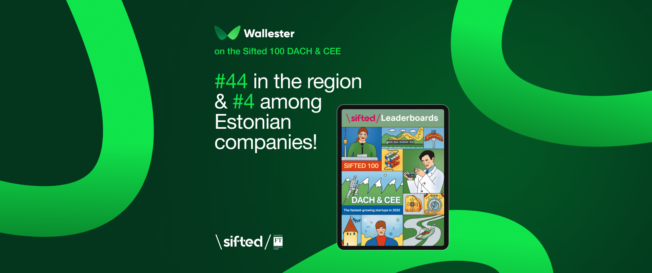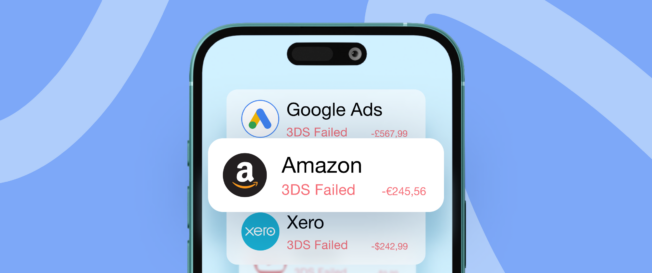Software as a Service, or SaaS, represents a transformative shift in the way software is delivered and consumed. It allows users to access applications via the Internet rather than installing and maintaining programs on individual devices. This model leverages cloud infrastructure to provide a smooth and scalable experience, making it ideal for modern organizations seeking cost-effective and efficient solutions. SaaS products are particularly valued for their accessibility, allowing users to interact with sophisticated software applications through a web browser, eliminating the need for complex hardware or installation processes.
What is SaaS?
SaaS is a model where programs are hosted by a cloud provider and made available to users over the net. This cloud delivery model replaces traditional software models that require installation on local machines. SaaS applications are typically hosted in a multi-tenant architecture, where a single instance of the solution serves multiple users while keeping their data secure and isolated. This architecture minimizes operational overhead for both the provider and the user.
One of the defining features of SaaS products is their subscription-based pricing. Users pay a recurring fee to access the software, which often includes updates and technical support. This predictable cost structure appeals to businesses looking to optimize expenses without compromising on quality. Furthermore, the universal compatibility of SaaS solutions, which operate across devices and operating systems, demonstrates their flexibility and broad appeal.
How does Software as a Service work?
The SaaS delivery model operates on a cloud infrastructure built to host a framework, store information, and manage user interactions effectively. Users reach these applications directly through web browsers, removing the need for downloading or installing programs on their local devices. This design simplifies access and provides compatibility across various platforms and operating systems, making it a practical solution for many companies.
One of the defining features of SaaS is its reliance on a multi-tenant architecture. This approach allows multiple users to share the same computing resources while maintaining strict data separation and security. Each user’s metrics are stored in isolated sections, safeguarding confidentiality while optimizing resource usage. By managing updates, maintaining servers, and addressing technical requirements, SaaS providers relieve their clients of complex IT tasks, allowing them to focus on their core operations.
SaaS applications also offer immediate usability. Once a subscription is activated, users can start utilizing solutions without delays for configuration or hardware setup. This capability supports rapid deployment, which is particularly valuable for organizations operating in fast-paced environments. Moreover, the scalability of SaaS products means entities can adjust their subscription plans to accommodate growth or fluctuating demands, adding or reducing features as needed without incurring significant additional costs.
This operational model also facilitates collaboration and remote work by allowing teams to use shared tools and data from any location with a web connection. By integrating seamlessly with existing systems and offering customization options, SaaS provides businesses with a dynamic and user-friendly experience that adapts to their needs over time.
Examples of SaaS products
The SaaS ecosystem is incredibly diverse, offering tailored solutions for various industries and operational needs. Software as a Service platforms are known for their ability to provide significant business value by improving operations and reducing costs. Customer relationship management tools like Salesforce are widely used to manage client interactions, helping organizations track customer records, automate sales processes, and improve overall communication. Similarly, enterprise SaaS products such as NetSuite bring together core operations, from finance to supply chain management, into one unified system.
Marketing platforms like Adobe Marketing Cloud help companies analyze customer data and run effective campaigns. These tools provide marketing automation options that save time while improving accuracy. Productivity tools such as Google Workspace include widely used applications for collaboration, like Google Docs and Google Meet, making them popular choices for companies of all sizes.
E-commerce platforms like Shopify are improving the retail industry, allowing to set up online storefronts and manage inventory efficiently. Shopify’s flexibility has made it a reliable solution for both small firms and large-scale enterprises. Many platforms offer flexible pricing models, including subscription-based plans and free services with limited features.
A brief history of SaaS
The story of Software as a Service dates back to the 1960s, when early computing systems introduced the idea of time-sharing. In those days, multiple users could access a single, large computer by sharing its resources. This was revolutionary at the time because it allowed organizations to reduce costs and maximize efficiency by avoiding the need for their own bulky and expensive systems.
Fast forward to the late 1990s, and SaaS began to change into what we recognize today. One of the key players driving this change was Salesforce, a company that changed the game for solutions delivery. Launched in 1999, Salesforce introduced a web-based customer relationship management (CRM) system. Unlike traditional software that needed to be installed on computers, Salesforce offered its tools entirely online. This meant users could interact with the framework anytime, anywhere, as long as they had an internet connection. It was a bold move that marked a major shift away from the old on-premises model, where programs had to be installed and maintained locally.
The early 2000s saw rapid advancements in web technology. Faster speeds and more reliable connections made web-based solutions practical and highly convenient. At the same time, cloud services started gaining traction. Cloud providers offered their clients access to powerful computing resources without needing their own physical servers. This technology formed the base of the SaaS model, making it easier than ever to host and deliver software over the digital network.
One of the reasons SaaS became so popular was the convenience it offered. No more expensive hardware, no more lengthy installations, and no more manual updates. SaaS providers took care of everything behind the scenes, from server maintenance to software development and upgrades. This hands-off approach appealed to entities, especially small and medium-sized ones, as it allowed them to focus on their core activities rather than IT management.
Over time, cloud security also evolved significantly. Early concerns about storing sensitive data online were addressed through better encryption, stricter regulations, and strong protection measures. This gave organizations the confidence to adopt SaaS solutions for even their most critical operations.
Why is SaaS essential?
SaaS is important because it offers practical solutions to many common challenges. One of the biggest benefits is its cost-saving potential. Unlike traditional frameworks, which often require expensive hardware and large upfront payments, the SaaS model allows the use of powerful tools without a big initial investment. Instead, users pay a subscription fee, which makes budgeting simpler and more predictable.
Another benefit of SaaS products is their flexibility, allowing companies to adapt the suite to their needs without creating their own version from scratch. SaaS apps are hosted online, so they can be typically opened from anywhere with a web connection. This means employees can use the tools they need whether they’re in the office, at home, or traveling. It supports remote work and makes collaboration between teams easier than ever. The ability to use these applications on multiple devices, like laptops, tablets, and smartphones, adds to their convenience.
SaaS also takes the hassle out of keeping solutions up-to-date. Service cloud providers handle updates automatically, so users always have access to the latest features and improvements. There’s no need for clients to spend time or resources managing updates themselves, which saves time and avoids interruptions.
Scalability is another important advantage. Companies can start small and add more features, users, or storage as their needs grow. Whether a company is expanding quickly or dealing with seasonal changes in demand, SaaS can adapt without requiring a major overhaul. This makes it a smart choice for companies looking for solutions that can grow with them.
Finally, SaaS removes the need for complicated installations or maintenance. Everything is managed by the provider, so businesses can focus on what they do best rather than worrying about IT infrastructure. It’s a straightforward and efficient way to use advanced tools without dealing with technical challenges.

SaaS functionalities
SaaS platforms offer a wide range of features that help companies simplify their operations and get more done efficiently:
- Shared architecture. Modern SaaS applications serve multiple users using shared resources. At the same time, each user’s information is kept private and secure. This approach also allows SaaS vendors to support business growth without performance issues.
- Compatibility with other tools. Many platforms work smoothly with other programs, including APIs and third-party apps. This makes it easier to connect existing systems, reducing extra work and keeping everything organized in one place.
- Data insights. SaaS solutions often include tools to help organizations analyze their metrics. Whether it’s tracking customer behavior, financial trends, or employee productivity, these insights help teams make better decisions based on real facts.
- Flexible setup options. Users can adjust the features and settings of most instruments to match their specific workflows. This allows companies to use the solution in ways that suit their daily operations without needing complicated adjustments.
- Strong data protection. Security is a top priority for SaaS companies. Features like encryption, regular audits, and compliance with laws such as GDPR make sure that sensitive information stays safe from breaches.
- Automatic updates. All framework maintenance and updates are handled by the provider. Users don’t have to worry about installing updates or fixing bugs themselves, which saves time and avoids interruptions to their work.
- Room to grow. SaaS platforms are flexible when it comes to scaling. If a company needs more storage, additional users, or advanced features, it’s easy to adjust the subscription plan without switching to a completely new system.
- Simple interfaces. SaaS tools are easy to use, even for people who aren’t tech-savvy. This means teams can start using them quickly without needing long training sessions.
These features make the SaaS model a practical choice for those looking for reliable, flexible, and efficient tools to support their daily work. By focusing on usability and convenience, SaaS offerings help companies stay productive and adaptable.
What are some common SaaS applications?
SaaS applications are used in many industries and for all kinds of tasks. Here are some popular examples that people rely on every day:
- Accounting and аinance. Tools like QuickBooks Online make it easier to track expenses, manage budgets, and handle taxes without needing a background in accounting.
- Team сommunication. Apps such as Slack and Microsoft Teams help teams stay connected with messaging, video calls, and file sharing – all in one place.
- Project management. Platforms like Trello and Asana help teams organize their tasks, set deadlines, and keep everyone on the same page.
- E-commerce. Shopify gives firms everything they need to run an online store, from managing inventory to handling payments and communicating with SaaS customers.
- Online storage. Cloud providers like Dropbox and Box let people securely store files online and access them from anywhere, whether on a laptop or a phone.
These tools are just a few examples of how SaaS helps with everything from staying organized to growing a business. No matter the industry, there’s likely a SaaS application that fits the need perfectly.
Cloud vs. SaaS: what’s the difference?
It’s easy to mix up SaaS and cloud computing since they’re closely connected, but they aren’t the same thing. Think of cloud computing as the big picture – it includes several types of services like Infrastructure as a Service (IaaS), Platform as a Service (PaaS), and Software as a Service (SaaS). SaaS is just one piece of this larger puzzle, focusing specifically on delivering ready-to-use solutions over the Internet.
Here’s how they differ:
- IaaS (Infrastructure as a Service)
This is about providing virtualized computing resources, like servers and storage, over the net. A good example is Amazon Web Services (AWS), which allows companies to build and host their own applications without needing physical hardware.
- PaaS (Platform as a Service)
This offers a platform for developers to create and deploy custom applications. Platforms like Microsoft Azure provide the tools, frameworks, and environments that developers need to build solutions without worrying about managing servers or operating systems.
- SaaS (Software as a Service)
This is where the application is fully developed, ready to use, and hosted online. Users don’t need to install anything or handle updates – everything is taken care of by the SaaS vendor. Examples include Gmail for email or Zoom for video calls.
In simpler terms, if cloud computing is like renting an empty space (IaaS services) or a fully furnished workshop (PaaS), then SaaS is like walking into a shop, grabbing the finished product, and using it right away. It’s ready to go, no setup is needed.
The key takeaway? While online computing powers the entire system, SaaS architectures focus on delivering programs to users in the most convenient way possible. It’s the part of cloud services that most people interact with in their daily lives.
SaaS vs. On-premises software
The differences between SaaS and on-premises solutions are significant. On-premises variant requires installation on local devices or servers, demanding additional hardware investments and ongoing maintenance. In contrast, SaaS operates on a subscription basis, with applications hosted in the virtual infrastructure and accessed via the digital network.
With SaaS, the responsibility for updates, security, and technical support rests with the SaaS vendor. This model offers greater flexibility and reduces downtime, making SaaS a preferred option for organizations seeking scalable solutions. By comparison, on-premises software often involves higher costs and complexity, which can hinder agility and innovation.
The future of SaaS
The SaaS industry continues to grow as technology improves and user demands shift. New trends are changing how these platforms work, making them more useful and relevant for organizations and individuals.
One big change is the growing use of artificial intelligence (AI) and machine learning (ML) in SaaS applications. These technologies add smart features, like tools that analyze metrics and offer recommendations, or systems that adapt to individual user preferences. For example, a retail SaaS platform might suggest products based on past purchases, while a finance tool could help detect unusual transactions.
There’s also a move toward creating frameworks for specific industries. Instead of providing general tools for everyone, most SaaS providers typically focus on sectors like healthcare, education, and finance. This means doctors can use platforms designed for managing patient records, teachers have tools for online classes, and accountants get programs tailored to financial regulations.
Hybrid cloud models are becoming more common, too. This approach lets companies store sensitive information on private clouds while using public servers for everyday tasks. It’s a practical option that balances security with cost efficiency.
Looking ahead, SaaS is set to become an even bigger part of daily operations. With smarter features and options tailored to unique needs, it helps save time, manage resources, and stay productive. As new challenges emerge, SaaS vendors will keep adapting to offer solutions that meet real-world demands.
Wallester solutions: more than SaaS
Wallester delivers practical SaaS solutions that address business needs with simplicity and efficiency. The company focuses on creating software that is straightforward to use and helpful for companies looking to manage financial processes, issue payment cards, or improve expense tracking.
One of Wallester’s strengths is flexibility. The platform can easily adapt to different needs, making it suitable for companies of all sizes and industries. This adaptability helps businesses keep up with changing demands without requiring major adjustments or disruptions.
Security is another area where Wallester stands out. The company takes strong measures to safeguard sensitive information. Features like encryption and compliance with international standards make Wallester a dependable choice for organizations handling financial records.
Integration is made simple with Wallester. The platform works well with existing systems, so companies can start using it without facing complicated technical hurdles. This makes implementation smoother and reduces downtime, allowing partners to stay productive while upgrading their tools.
What makes Wallester different is its approach to customer support. The team actively helps clients get the most out of the platform, offering guidance and assistance every step of the way. This hands-on approach shows their dedication to building lasting partnerships with businesses. Wallester’s solutions focus on practicality, security, and simplicity, providing partners with reliable tools to manage their financial operations.
What counts as SaaS?
What is SaaS in the UK?
Is SaaS frontend or backend?
Is Netflix a SaaS?
Which types of cloud computing are there?
– SaaS (Software as a Service): This provides users with ready-to-use applications hosted online, such as Gmail, Slack, or QuickBooks. Users can use these tools through a web browser without worrying about installations or maintenance.
– PaaS (Platform as a Service): This is aimed at developers and provides a platform for building, testing, and deploying custom business applications. Platforms like Microsoft Azure or Google Cloud Platform supply the common infrastructure and tools needed to create software without managing the underlying hardware.
– IaaS (Infrastructure as a Service): This provides virtualized computing resources like servers, storage, and networking over the Internet. Companies like Amazon Web Services (AWS) let businesses rent the infrastructure they need to run applications or store data without buying physical hardware.
Each type serves different purposes, but together they form the foundation of online computing.



